What Are The Challenges?
New technologies, including AI, machine learning, blockchain, NLP, and so many more, can introduce many learning opportunities for marketers, along with several challenges. For one thing, while most people may have a general idea of what AI stands for, many people don’t understand that AI is an encapsulating term for machine learning, deep learning, natural language processing, and not only. Usually, most people associate artificial intelligence with the future replacement of humans by robots. In a nutshell, it is the science of trying to make a machine work like a human brain, efficiently and faster.
Explaining how AI can apply to many aspects of the world can still be an uphill battle. One of the things to consider is that AI is not a tangible thing. Understanding the nuts and bolts of what makes AI work, how it is built, what’s in the black box, and how it can improve users’ lives is usually a challenge. So, while it may be easy to explain how Spotify is using AI to suggest the next song for a user to hear, it’s not that easy to explain how AI can match a customer to a call center agent in order to resolve an issue faster. And if you think this is not important… then you’re wrong. Shaving 5 seconds off an agent’s call in a 2.500 agent strong contact center amounts to approximately 3.33 mins for the agent, in an 8-hour shift, but for the contact center, it means saving a little more than 138 hours a day! Hours that can be used to handle more calls or the… reduction of the workforce by 17 agents. Not that we’re saying that’s what a call center would do, but efficiency is in the mind of every executive.
Another challenge we’ve seen often is marketers that don’t understand the high-end tech lingo or science related to artificial intelligence. Meanwhile, many of these AI startups are university spin-offs or have founders originating from academia or research. So, marketing people have to work with highly intelligent people who may not understand or appreciate marketing techniques, usually very different concepts from the research papers or essays they are used to. Frequently they don’t see the value in marketing; even considering it as a way to burn money without offering anything that can help promote their “world-shattering technology”… which in their minds is self-evident and should have people flocking to grab it.
Marketers often feel more comfortable selling directly to consumers with various forms of advertising and social media. Consumer marketing is a completely different beast from B2B Marketing. With AI startups, the marketing team now has to deal with selling directly to businesses. The channels are different, sale cycles are longer, and campaigns have to be honed into a variety of personas.
On top of all the previous challenges, startups often have zero budget and larger companies see AI as a side project with no clear path to monetization, which often means a limited marketing budget. This possesses an issue when it comes to targeting advertising space. Most of the time this leaves the marketing team with one option…organic marketing! They have to build a strategy with zero budget that can have the maximum impact. Obviously, the downside is that this takes time. A lot of time. But fear not aspirational AI marketer, you shall find some organic ideas further down the article.
Why Is It Important To Market AI Technology?
Basic Organic Marketing Activities and More
1. Explain, Explain, and Explain Some More
When it comes to artificial intelligence you have to explain this technology in as many different ways as possible. For laymen people keep it simple. For example, parallelisms to how the human brain works can achieve that goal.
Build a narrative that you can all agree on. Storytelling is very important as it can paint a picture on how a technology can help a user’s future. Building a story will also help you achieve eloquent messaging.
Visuals are your best friend, so don’t be afraid to use them abundantly. Utilise your fancy PowerPoint decks, interactive animations, videos, etc. Emphasise how artificial intelligence can impact the world at large. Discuss how it is currently changing people’s lives and can continue to do so in the future. For example, consider how wearables and smart home technology is making independent life for elderly people more feasible.
2. Discuss ROI
While discussing this ground-breaking technology is exciting, it is still a product one must sell. In other words, you must convince the customer how such service can:
- Make functional processes easier and/or faster
- Lower business overhead
- Impact customer satisfaction
- Reduce financial costs

During every presentation, marketing teams should weave specific ROI percentages or facts throughout their collateral, including in websites, landing pages, and campaigns. Numbers and facts are easier for prospects to memorise and pass on to colleagues, and while it’s important to explain what your technology does… it’s equally important to advertise what it can achieve.
3. Build Case Studies
4. Perfect Your Software Demo
You have to remember that everyone is not an engineer. The prospects you are presenting to, who make the final decisions or write checks, may not have any hard-core technical experience. If they do have technical experience, it most likely won’t be as extensive as an ML engineer or full-stack developer. So make sure you explain your product in a way that makes it easy for them to understand.
In the pitch, everyone in the meeting should walk away with a full understanding of what the product does and how it can benefit their business. And yes, they should be wowed by, and educated, from your visuals!
5. Offer Free Consulting
6. Join Software Listing Sites
Once the product is ready, it is a good idea to put it out there for public consumption. List your technology on software listing sites such as Capterra, G2, SalesForge, etc. Keep track of what users are saying on these sites about your technology. Take heed of great -or not so great- reviews, incorporating lessons into your product design and marketing activities. Think of it as ongoing user testing.
7. Create Content
Team members and leaders should put their knowledge out in various content formats that will draw more attention to their expertise and build their brand. These could include podcasts, webinars, newsletters, videos, interviews, and articles. You can start small, from your company blog, and eventually reach out to industry media sites to include an article you wrote, or have them conduct an interview with a person from your team. Start by creating unique content and building a thought leadership profile for your executives or other team members. Get inspired by Ted Talks, a very respected avenue for thought leaders to spread their ideas and inspire others.
Obviously don’t forget to use social media to disseminate the content you or others have created about your team, company or products.
8. Tech Events
I Hear You but Where To Begin?
Research
First of all, make sure you understand who the target buyer is. Do any relevant research to understand what problems this potential buyer has and how your technology can meet their needs.
In addition to researching potential clients, make sure you research the market as a whole – including your competitors. Stay informed of the competition by looking at their websites, checking out their products, and, of course, networking with them and their clients at various tech events. Take the time to also review their thought leadership content.
Do a competitive analysis of at least four or five competitors. Such analysis should include their social media, website audience, and their online footprint, overall. Keep track of their online footprint to see how it changes every 6 months or so.
Start working on your user personas. Who are they and what do they look like? There’s a lot of information online on how you can build and validate them.
Your Website
Build the company website making sure it is built on a platform that allows you to easily make changes internally, like Squarespace or WordPress. There’s nothing worse than needing a landing page for a marketing campaign and having to wait a week for a developer to build it.
Make sure your website presents your product well by way of its messaging and a good demo. Visitors should be able to clearly understand your company’s focus. The website should include an explanation of the technology, its benefits, and some ROI indicators. Include white papers or research material, testimonials, case studies, team members, academic accolades and credentials, partners, blog section, social media channels and any other information that can help your potential client dig deeper. If you exhibit or speak at any tech events make sure you list them. Present links to any thought leadership content your team has produced.
Make Your AI Startup Stand Out From The Rest
AI marketing may be a challenge, but it is not impossible to successfully run. It is imperative that startup teams, and any marketers brought on for the journey, can clearly convey the message and impact of the product. Setting reasonable expectations and revisiting them often is also important. Use OKRs to keep track, quarterly, how successful you’ve been in general ticket items, like website traffic or number of articles published in the media.
Take your company’s branding and marketing efforts seriously and make sure that everyone, on the team, understands and participates. You never know who might turn out to be a talent in writing a company newsletter, ideating on a new campaign, or speaking publicly. Taking advantage of your team’s strengths, by getting them involved, always pays back.
Apologies for the length… grab a well deserved coffee break now.
- marketing
- artificial intelligence
- startups
Keep on reading...

Maximizing ROAS Through Measurable Marketing: A Guide for Small Business Owners
Maximizing ROAS through measurable marketing is not just about spending more but spending smarter. By avoiding common mistakes, debunking myths,

Riding the Pros and Cons of Integrating ERP Systems with E-commerce Platforms
ERP e-commerce integration refers to the process of connecting an e-commerce platform (e.g. WooCommerce) with an ERP system. This allows



